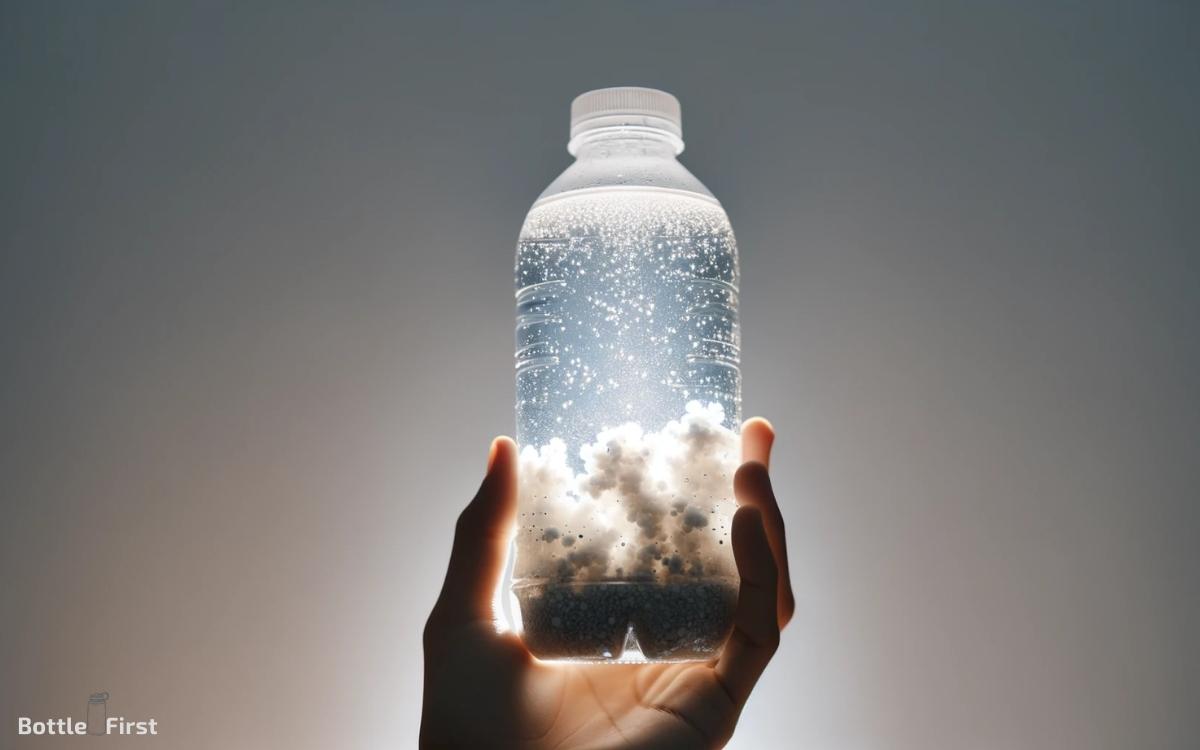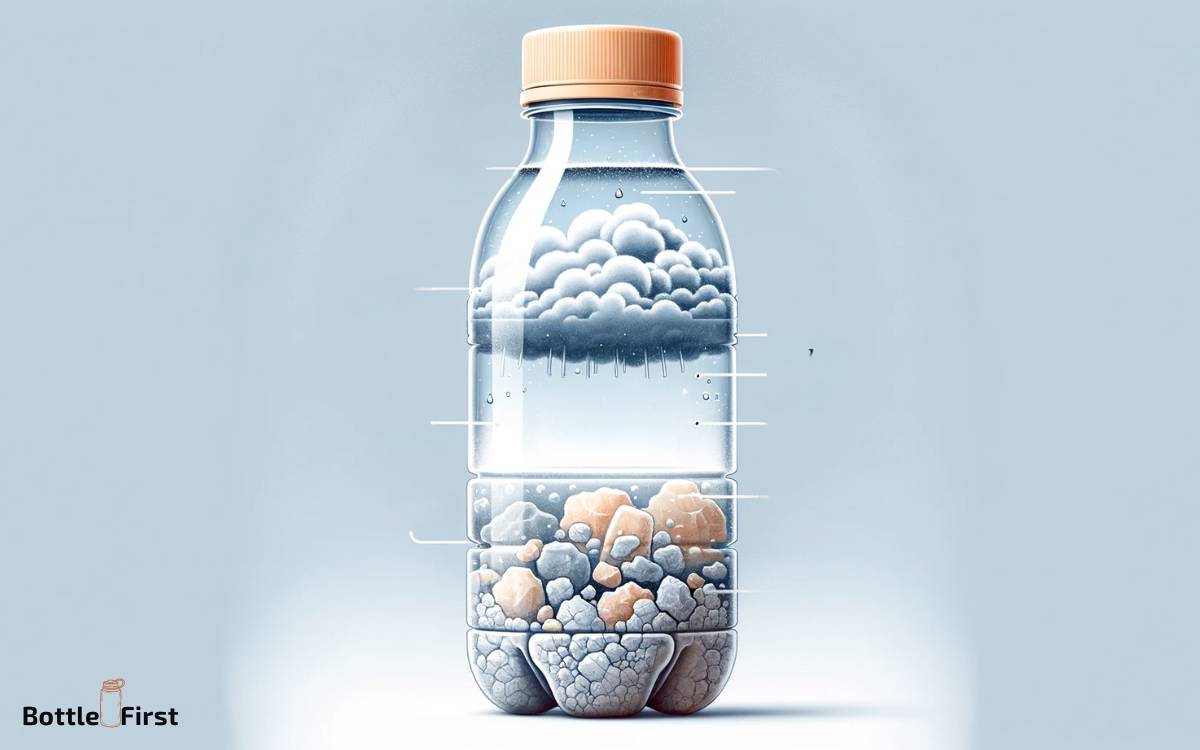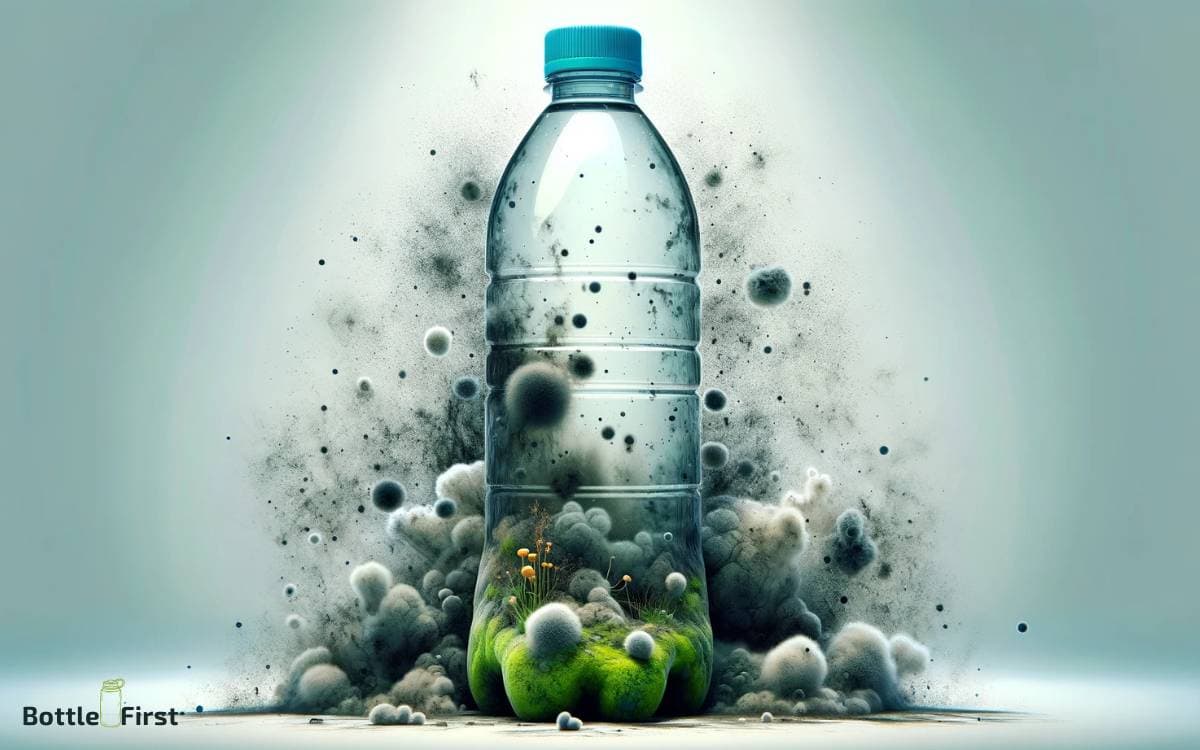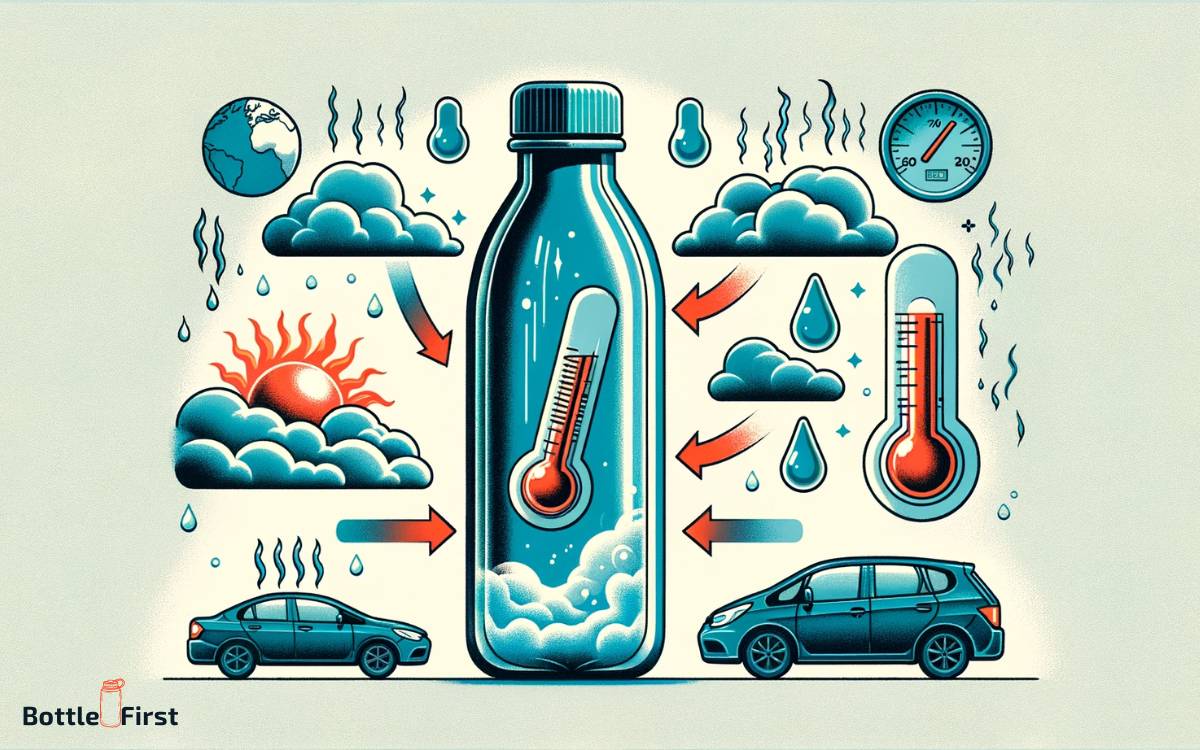Why is My Water Bottle Cloudy? Find Out!
Cloudiness in water bottles can be caused by several factors including mineral buildup from hard water, bacterial growth, detergent residue, or the degradation of the plastic bottle itself.
There are various reasons why a water bottle might appear cloudy:
To ensure your water bottle remains clear, establish a routine of regular cleaning with appropriate methods and consider using filtered water to prevent mineral deposits.
Key Takeaway
Hard Water Deposits
The accumulation of hard water deposits in your water bottle is a common issue that can lead to cloudiness and affect the overall cleanliness of the container.
These deposits are primarily caused by the presence of minerals such as calcium and magnesium in the water. When the water evaporates, these minerals are left behind, forming a cloudy residue on the interior of the bottle.
To combat this problem, innovative solutions such as using vinegar or specialized cleaning tablets can effectively dissolve and remove these deposits, restoring the clarity of the bottle.
Additionally, advancements in water filtration technology can help reduce the mineral content in the water, preventing the formation of hard water deposits in the first place.
However, beyond the issue of hard water deposits, bacterial contamination can pose an even greater threat to the cleanliness of your water bottle.
Bacterial Contamination
Bacterial contamination poses a significant risk to the cleanliness of your water bottle, especially after addressing hard water deposits.
Once bacteria infiltrate your water bottle, it can lead to various health hazards and compromise the quality of the water you consume.
Here are some innovative ways to combat bacterial contamination:
- UV-C Light Technology: Utilizing UV-C light to sterilize the interior of your water bottle can effectively eliminate bacteria, viruses, and other microorganisms.
- Antibacterial Coatings: Applying antibacterial coatings to the interior surfaces of the water bottle can inhibit the growth of bacteria and maintain a hygienic environment.
- Self-cleaning Bottles: Investing in self-cleaning water bottles equipped with advanced purification systems can continuously eliminate bacteria, ensuring the water remains safe for consumption.
- Eco-friendly Sterilization Tablets: Utilizing eco-friendly sterilization tablets can efficiently disinfect your water bottle without leaving harmful residues or affecting the taste of the water.
Mold and Algae Growth
After addressing hard water deposits, it is essential to be vigilant against mold and algae growth in your water bottle, which can compromise its cleanliness and pose potential health risks.
Mold and algae thrive in moist environments, and when left unchecked, they can contaminate your water and affect its taste. Additionally, exposure to mold and algae can lead to respiratory issues and allergic reactions.
To prevent this, regularly clean and thoroughly dry your water bottle, especially in hard-to-reach areas. Consider using a bottle brush or a mixture of vinegar and water to scrub the interior.
Below is a table summarizing the key points to prevent mold and algae growth:
- Clean and dry your bottle thoroughly
- Use a bottle brush for deep cleaning
- Use a vinegar and water solution for scrubbing
- Store your bottle in a dry, well-ventilated area
Plastic Degradation
To understand the phenomenon of cloudy water bottles, it is crucial to consider the effects of plastic degradation. Plastic degradation can significantly impact the clarity and quality of water stored in bottles.
Here are some key factors contributing to plastic degradation:
- UV Exposure: Ultraviolet (UV) radiation can cause photo-degradation of plastics, leading to the release of chemical compounds that may affect the water’s appearance and taste.
- Heat: Exposure to high temperatures can accelerate the degradation of plastic materials, potentially causing the leaching of substances into the water.
- Mechanical Stress: Physical wear and tear from impacts or bending can weaken the plastic, making it more prone to degradation and leaching.
- Chemical Interactions: Contact with certain substances or chemicals can initiate degradation processes, affecting the plastic’s integrity and the water it contains.
Improper Cleaning Techniques
Continuing from the previous subtopic of plastic degradation, improper cleaning techniques can contribute to the cloudiness of water bottles, impacting their clarity and cleanliness.
When water bottles are not cleaned properly, residues from beverages, oils from hands, and even remnants of cleaning products can build up, leading to cloudiness.
Traditional cleaning methods such as using abrasive sponges or harsh detergents can scratch the bottle’s surface, creating small crevices where bacteria and impurities can accumulate.
Moreover, high water temperatures during dishwashing can cause plastic to warp, further compromising the bottle’s transparency.
To address this, innovative cleaning approaches such as using gentle, eco-friendly detergents and specialized bottle brushes can effectively remove residues without damaging the bottle.
Additionally, incorporating regular deep cleaning methods, like using baking soda or vinegar solutions, can promote optimal clarity and hygiene.
Temperature Fluctuations
Temperature fluctuations can significantly impact the clarity and cleanliness of water bottles, potentially contributing to cloudiness.
This occurs due to several factors:
- Thermal expansion and contraction of the bottle material can lead to micro-fractures, providing a breeding ground for bacteria and other microorganisms.
- Sudden temperature changes can cause condensation inside the bottle, creating a damp environment that promotes bacterial growth.
- Fluctuating temperatures can also cause the materials in the bottle to leach into the water, affecting its clarity and taste.
- Rapid temperature variations may lead to the formation of mineral deposits, further clouding the water and affecting its overall quality.
Understanding these effects is crucial for maintaining the clarity and cleanliness of water bottles.
Chemical Reactions
The fluctuating temperatures and material composition of water bottles can lead to chemical reactions, affecting the clarity and cleanliness of the water.
When water bottles are exposed to varying temperatures, especially extreme heat, the plastic or metal components can undergo chemical reactions.
For instance, certain plastics may release chemicals like BPA when exposed to heat, leading to cloudiness in the water and potentially impacting its taste.
Similarly, metal water bottles can undergo oxidation reactions, causing the water to become cloudy or develop an off-flavor.
To address these issues, innovative materials and coatings are being developed to mitigate the occurrence of such chemical reactions, ensuring that water remains clear, clean, and safe for consumption, regardless of environmental conditions.
Conclusion
The cloudy appearance of your water bottle may be caused by a variety of factors.
These include hard water deposits, bacterial contamination, mold and algae growth, plastic degradation, improper cleaning techniques, temperature fluctuations, and chemical reactions.
It’s ironic that something meant to hold clean, pure water can become clouded and contaminated.
Perhaps it’s a reminder that even the most seemingly innocent objects can be affected by the world around them.








